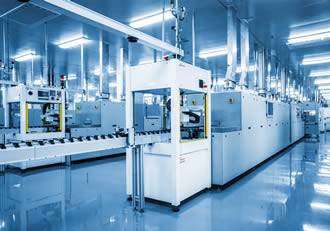'Retro'-fitting in to Industry 4.0

‘You can’t have your cake and eat it’ is one of many non-sensical phrases in the English language. To put it simply, this phrase means that you can't have it both ways. However, this is about to be proven wrong, as it's possible to retrofit while migrating to Industry 4.0.
As industrial plant managers struggle with aging infrastructure and strict regulations, they're looking for cost-effective ways to upgrade. With industry trends such as Industry 4.0 on the rise, many engineers may consider retrofitting a step backwards. In reality, system retrofits can contribute to improved communication and optimised production, resulting in a cost and energy efficient factory where you can eat as much cake as you like.
Here Jonathan Wilkins, marketing director of obsolete components supplier EU Automation discusses issues to consider when retrofitting in your migration to Industry 4.0.
Industrial components that are coming to the end of their service life are always at risk of causing unexpected downtime or delays to production. Inaccuracies and system stoppages can result in serious financial losses, so these components should be replaced at the first sign of failure. Retrofitting improves machine functionality and reliability by replacing older components with more advanced equipment. This extends the life of the system and reduces the need for future maintenance.
Many think of Industry 4.0 as the crème brûlée of 21st century automation. The chief executive of Siemens' automation department referred to it as ‘having everything imaginable connected to a network so that information from all these connected things can be stored, transferred, analysed and acted upon’. After being promised a life with no connectivity boundaries, the rest of us can't be blamed for wanting in on the action.
If you're striving towards Industry 4.0, there are particular parts of your system that you should target when retrofitting. One of the main principles of Industry 4.0 is interoperability, which allows your system to operate as a whole, rather than as individual components. Usually, this is done by implementing a monitoring and control system such as SCADA or DCS.
In keeping with the theme, let's consider your current system is a chocolate soufflé. It looks good, but you know you don't have much time before it collapses. Instead of waiting for it to turn into a sticky mess, replace the out-dated parts with new ones. For example, the integration of new generation Human Machine Interfaces (HMIs) can help your factory take the first steps to Industry 4.0 by visualising processes and reports better on the production line.
Retrofitting a HMI doesn't have to be costly. Because of the rate of production, some obsolete components are only five years old, making them an economical option. EU Automation's fast delivery time guarantee means your new part can be with you on the same day, helping you avoid downtime and keeping that metaphorical soufflé raised.
You'll obviously need more than a flashy HMI to get in line with Industry 4.0, but if you can find the balance between data and production you're on the right track. The Siemens Electronic Works facility in Germany is Industry 4.0 at its finest. Its machines, which are controlled by an automated system, seamlessly coordinate the production and distribution of the company's products.
There's a lot of embedded intelligence in devices being created today and by just implementing one of these smart machines into your production line, you're already one step closer to Industry 4.0. So, be one of those people who fight the case that you can have your cake and eat it too. If anyone disputes this, invite them to take a look at your retrofitted manufacturing system.
Similar articles
More from EU Automation
- Is it time to scale up? 30th June 2021
- Innovative automation projects for manufacturers 1st June 2021
- The future of HR in manufacturing 20th May 2021
- The Help to Grow scheme - what does it mean for manufacturing? 30th March 2021












Write a comment
No comments